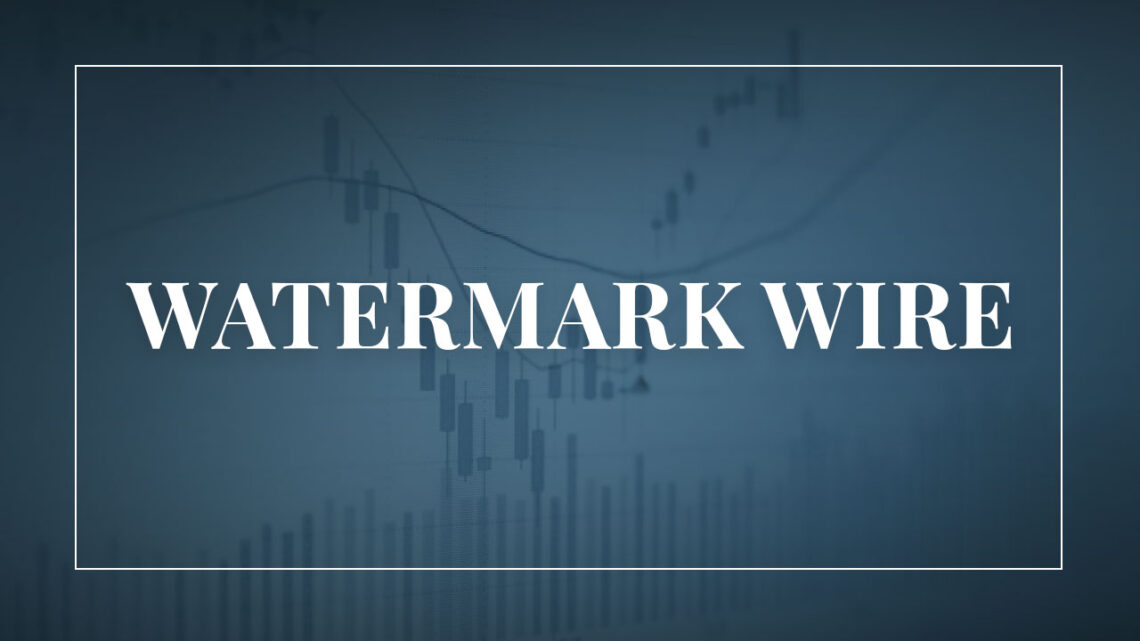U.S. M&A activity in Q1’24 points towards a market teetering on the edge of a potential rebound. Q1’24 had mixed results, with aggregate deal value rising significantly while deal volume declined YoY (measured as the total number of M&A transactions announced).
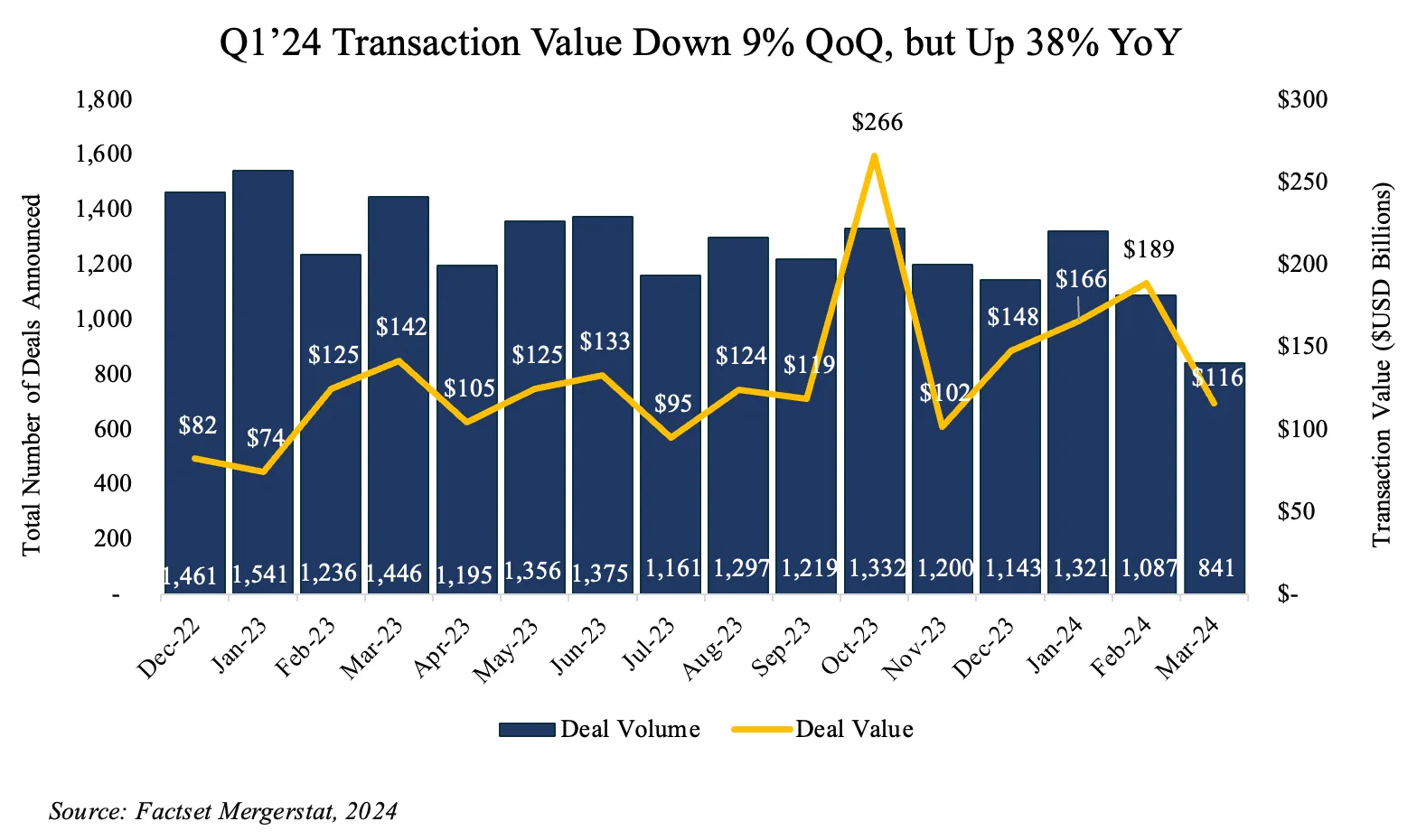
This period was marked by a surge in mega-deal activity, signaling revived confidence among prominent dealmakers and setting a robust tone for potential future transactions. Still, private equity largely remained on the sidelines despite maintaining unprecedented amounts of idle capital. Similarly, middle-market strategic buyers remained apprehensive in negotiating deals as deal volume and transaction value in the $25-$250 million range declined notably.
While interest rates remain elevated, strategic acquirers and financial sponsors have focused on shedding non-core units through strategic divestitures and bolt-on acquisitions. Amidst the cautious strides of the middle-market and economic uncertainties, the trajectory of M&A activity could either experience a resurgence or bump along at current levels. This commentary touches on the most important M&A trends and what they mean for you.
Current Trends in the U.S. M&A Market: Insights and Implications
- Resurgence in mega-deals suggests renewed confidence among dealmakers. According to LSEG Deals Intelligence, 14 deals over $10 billion were completed in Q1’24 with an aggregate deal value of $278 billion, which marked the strongest start for mega-deals since 2019. Notable deals include Capital One’s $35.3 billion takeover of Discover Financial, Synopsys’ $35 billion acquisition of software rival Ansys, and the merger of Diamondback Energy and Endeavor Energy worth $26 billion. [1] Heightened enthusiasm among prominent dealmakers comes off the back of strong Q4’23 earnings results, discussions of interest rate cuts, and a resilient stock market. The revival in mega-deals propelled aggregate U.S. M&A transaction value to over $470 billion, reflecting a 38% increase YoY compared to Q1’23.
Takeaways. It is essential to consider that confidence in the mega-deal market doesn’t always permeate into the middle-market. In a time of economic uncertainty, the capital markets favor larger companies, facilitating lower capital costs and higher valuations.
- Mid-Market M&A Activity More Challenged. Transactions worth between $10MM and $250MM have not bounced back as much as dealmakers had hoped. During the twelve months that ended March 2024, 1,407 middle-market transactions were completed compared to 2,005 in the prior year, a 30% decline. Transaction value during the same period declined 26% YoY to $100Bn from $135Bn a year prior. Median Q1’24 EV/EBITDA multiples rose more than a complete turn YoY, landing at 8.4x compared to 6.7x in 1Q’23. A sense of apprehension still prevails among dealmakers in approaching negotiations, highlighting the persistent uncertainty facing the M&A market in 2024. Confidence in the market has primarily stemmed from the expectation of interest rate cuts in the second half of 2024—an expectation that has not yet materialized. Recent statements from Federal Reserve Chair Jerome Powell indicate that interest rates may stay higher for longer than anticipated. Consequently, the market expects an 83% chance that rates will remain at 5.25% to 5.50% through June 2024. Persisting tight credit conditions could hinder the pursuit of acquisition opportunities. In this environment, it is crucial for sellers to maintain solid profit margins and set realistic expectations.
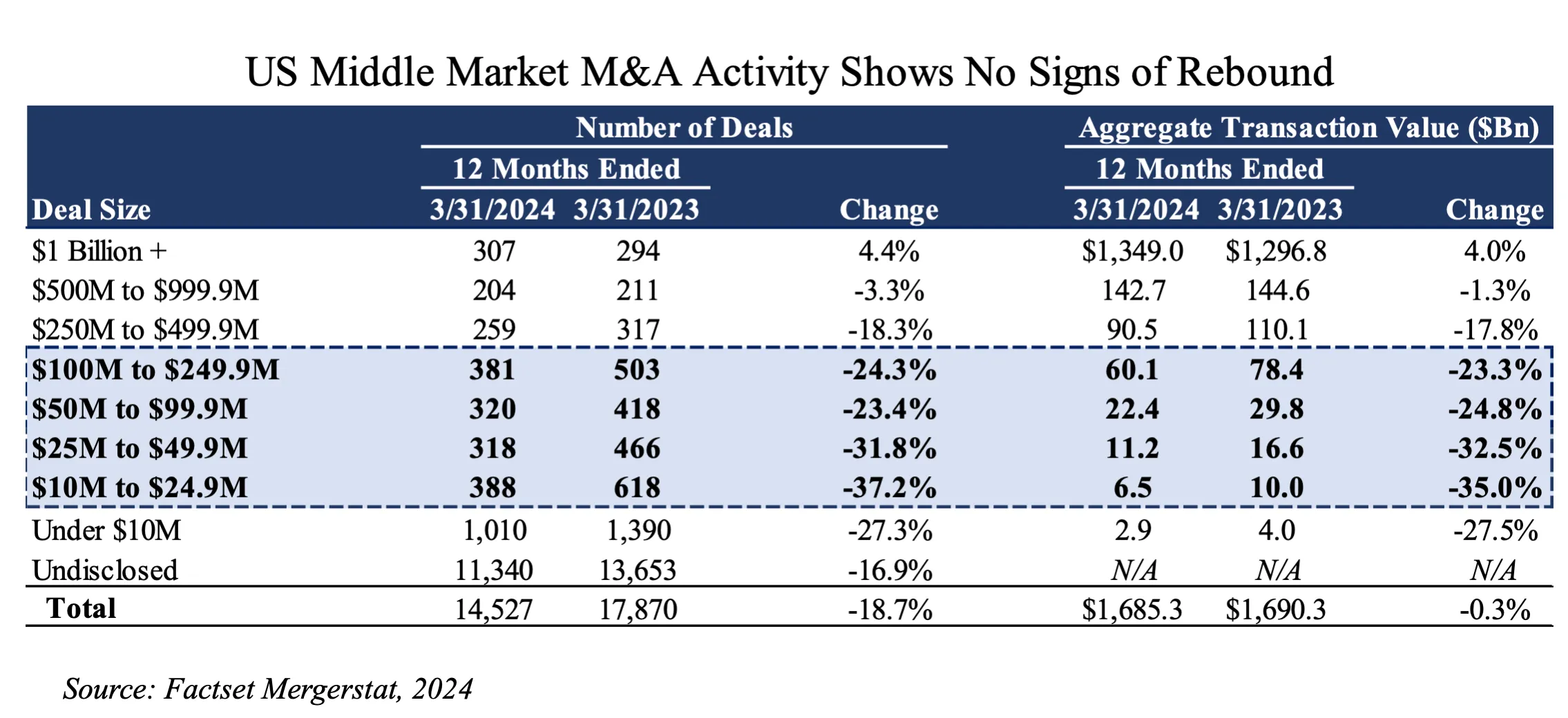
Takeaways. Timing considerations become even more important during periods of economic uncertainty. Sellers should consider not only timing from the perspective of personal readiness to sell and the overall health of their company, but also market timing and geopolitical developments.
- Private equity M&A activity remains muted. According to S&P Global Market Intelligence, private equity firms were sitting on $2.59 trillion of dry powder by the end of 2023, a historical high and an 8% increase from 2022 levels. Despite heightened pressure to return capital to L.P.’s, private equity firms have not engaged in increased volumes of dealmaking so far in 2024. On a quarter-over-quarter basis, PE deal value fell 8% from $171 billion in Q4’23 to $158 billion in Q1’24, while the total number of deals fell 30%. PE buyers have also shifted their investment strategy, prioritizing add-on transactions over platform acquisitions.
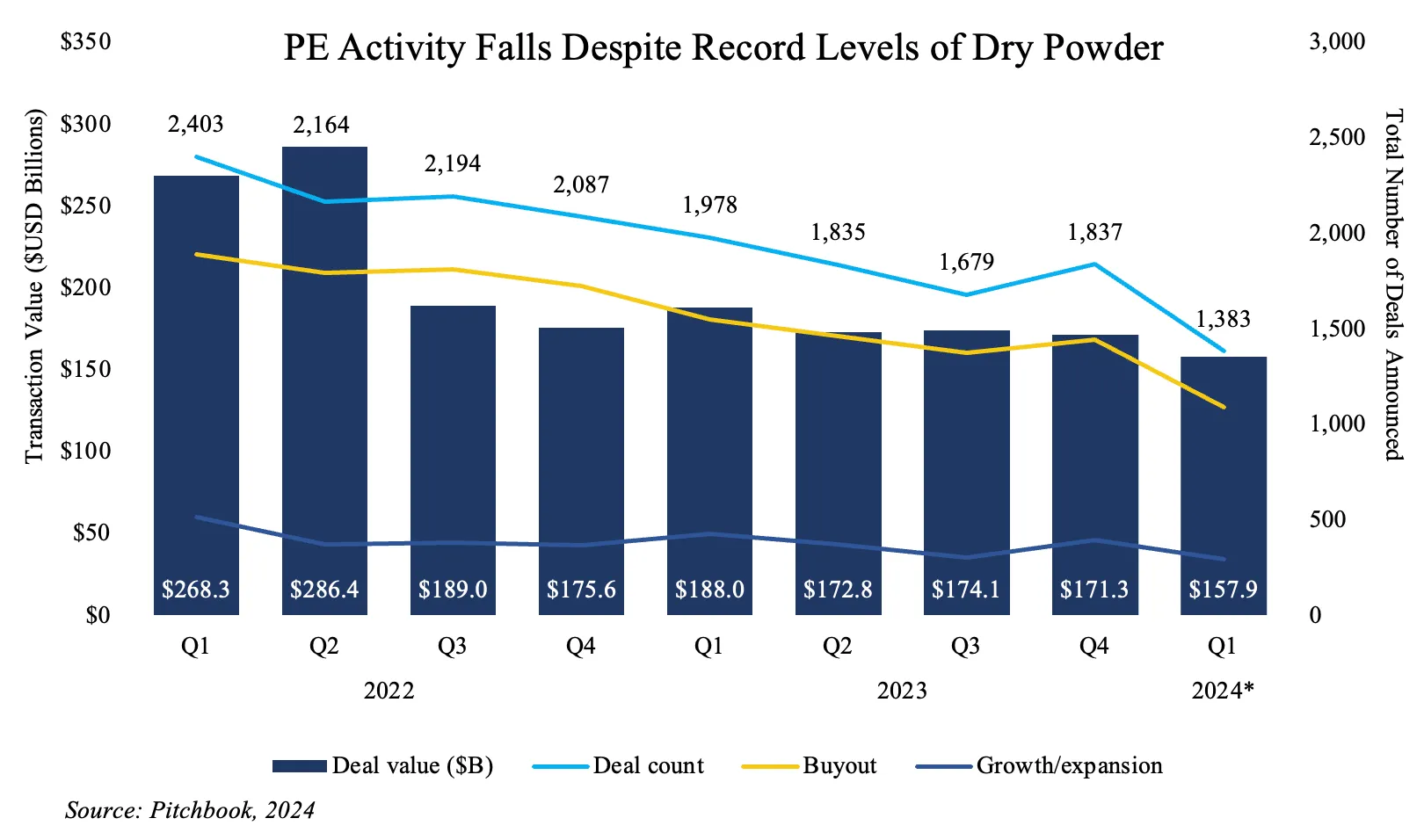
Takeaways. Healthy companies with less than $10MM in EBITDA that are considering a sale should find traction in the private equity marketplace as add-on acquisitions are driving deal flow.
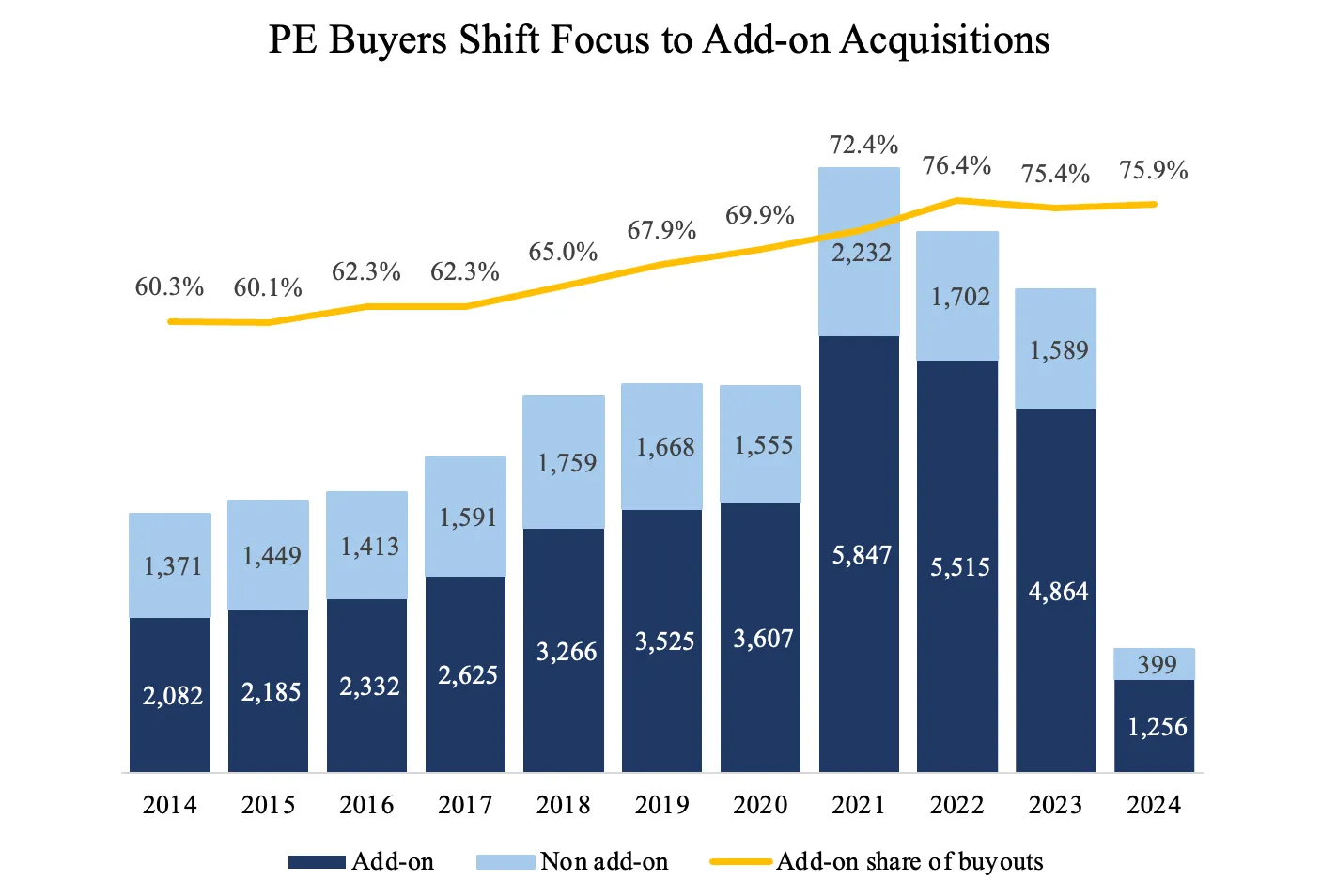
- The decline in U.S. M&A activity crosses nearly all sectors. Technology Services, Finance, and Energy Minerals carried U.S. M&A activity over the last three months ended March 2024, comprising 51% of the total transaction value. Finance, Commercial Services, and Technology services maintained the top spots regarding transaction volume, comprising 47% of the total deals announced. Still, nearly every sector in the U.S. experienced a net decline in transaction volume compared to the previous year (excluding Miscellaneous and Consumer Durables).
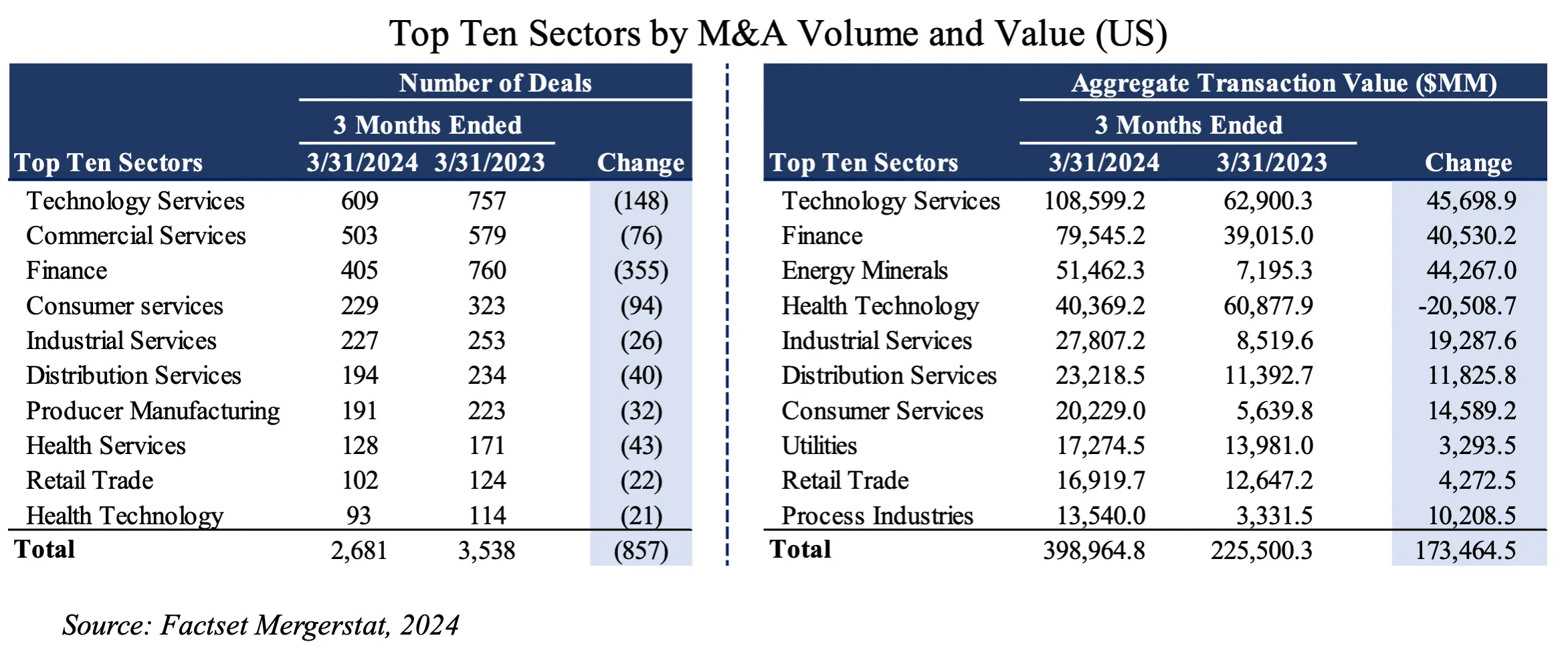
Takeaways. Overall, M&A volume is down across nearly all industries, highlighting the persistent challenges acquirers and sellers encounter in bridging the valuation gap. Nevertheless, sophisticated buyers understand that cool markets are opportune times to consummate acquisitions. This may present opportunities for sellers, too, as there are fewer competing deals in the marketplace. To take advantage of such opportunities/conditions your company must exhibit strength across various facets of the business, including strategy, people, processes, culture, innovation and financial performance.
2024 M&A Outlook Beyond the First Quarter
Optimism currently holds sway across the financial markets, including M&A. Recent strong stock market performance and the potential for rate cuts underpin a constructive outlook for the rest of 2024. Although deal volume is notably lower, this has not dampened enthusiasm for many M&A deals, especially in the United States. Not only this, but healthy balance sheets among cash-flushed corporates and record amounts of dry powder in the hands of PE sponsors indicate the legitimate potential for an M&A rebound. Still uncertainty lures ahead regarding the U.S. presidential election, weak economic growth, and persistent geopolitical tensions, which work congruently to stall dealmaking.
All eyes will be on the Fed during the next FOMC meetings, which will perpetuate optimism further or stop it dead in its tracks. It should also be noted that structured deals, such as spin-offs, carve-outs, and other divestitures, buoyed transaction volumes in Q1’24. As corporates and PE firms conduct strategic reviews, shedding non-core units and separating faster-growing businesses, more attractive targets may emerge, potentially stimulating more M&A activity. As for the middle-market specifically, it remains to be seen whether the same enthusiasm displayed by larger dealmakers will pick up steam with middle market companies and their boardrooms.
[1] Anirban Sen and Anousha Sakoui, “Global M&A Picks Up in Q1 After Flurry of Large Deals,” Reuters, 2024, www.reuters.com.
[2] Muhammad Asif and Annie Sabater, “Private Equity Firms Face Pressure as Dry Powder Hits Record $2.59 Trillion,” S&P Global Market Intelligence, 2023, www.spglobal.com.

